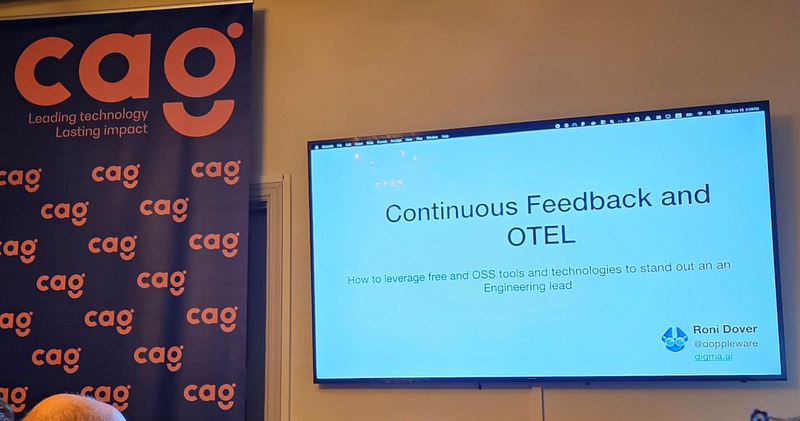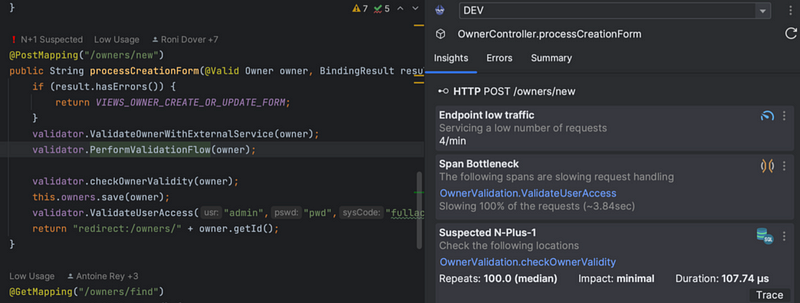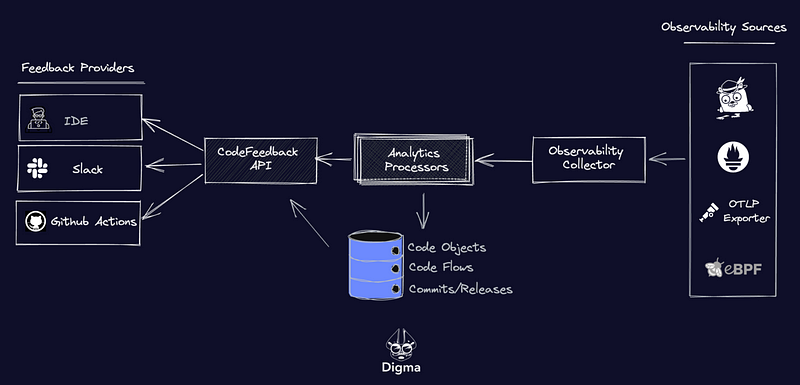How a Continuous Feedback Platform Enhances Observability for Developers
Find out more about Digma (the first Continuous Feedback platform)
Before attending the Jforum Stockholm #116 event about “OpenTelemetry and cloud availability”, I had never heard of the concept of Continuous Feedback. It was my first time attending an event organized by Jforum Stockholm. For this event, the host was a Swedish IT consulting company called CAG.
Two talk was supposed to be presented at this event:
- OpenTelemetry and Continuous Feedback by Roni Dover
- Staying available in face of a cloud region catastrophe by Johan Andrén
The main reason I attended this event was to see the words OpenTelemetry And Continuous Feedback in the title of the first presentation. Now, I am pleased that I attended this event, and in this story, I want to share with you what I learned about Continuous Feedback and also the first Continuous Feedback platform called Digma.
· What happened in the presentation? · Why does continuous feedback matter? · What is Digma? ∘ How does Digma work? · Final thought

What happened in the presentation?
I didn’t know Roni Rover, He is an experienced software developer. His talk about “OpenTelemetry and Continuous Feedback” was great, and I learned a lot of things from him. I don't want to write everything he said in his talk here, but I want to write my take. If you are interested, you can watch the complete video of his presentation at the Devoxx conference this year with the same title on the Digma YouTube channel:
His talk about the importance of OpenTelemetry as an accepted vendor-neutral open-source standard for implementing Observability by almost all programming languages and frameworks was interesting. He also shared this notion page with us, with great information and links about implementing Continuous Feedback in Java:
He explained the problem in the current approach of the software development process to have a feedback loop that relies on monitoring with a practical example. He talked about the importance of observability in the software development process and the benefits it creates. In the current approach, the feedback loop is not practically continuous.
His reference to the famous DevOps loop diagram to show the tools gap in the Continuous Feedback phase in this cycle was very clever.

Why does continuous feedback matter?
Continuous Feedback is not a new concept in software development, and almost all of us have dealt with it more or less. If you already have observability in your project or your project has a monitoring dashboard, you are already in the game.
The key point is to make the observability Continuous. Without continuous visibility into how code performs in real-world scenarios, developers are unable to make informed design decisions and accurately gauge the impact of any changes they make. Continuous Feedback fills the gap between observability and code, paving the way for a new and improved development method.
You may think that this concept of Continuous Feedback is the same diagrams and gauge charts that we have in monitoring systems like Grafana. The problem with the monitoring system is that extracting meaningful information from this massive amount of data takes a lot of work. Another problem is that we need to deploy our application to access the data for our metrics.
What is Digma?
As I mentioned, Analyzing raw data and dashboards can be time-consuming and slow down developers. Digma is the first continuous feedback platform to accelerate development cycles, especially in complex code bases. With Digma, you can integrate code insights into your IDE and dev tools, allowing you to use them while coding (for example, IntelliJ and PyCharm plugin), which saves you time and streamlines the development process.

One advantage of Digma is that you don't need to be an observability expert or wait for a production-breaking issue, so you can get continuous access to evidence-based feedback from Digma and continuously optimize and improve your code.
How does Digma work?
Digma employs OpenTelemetry to gather and analyze data such as traces, logs, and metrics about your code when it is executed on your local machine. This data can then be used to optimize and improve your application's performance. Additionally, you can effortlessly transmit your test and production data to Digma, allowing for seamless monitoring and analysis of your application's behavior in various environments.
After that, Digma will collect and analyze data to identify significant insights about the code. The software searches for regressions, anomalies, code smells, or any other patterns that can be valuable in understanding the code and its usage in development. By doing so, Digma helps reduce developers' feedback cycle effectively.

Final thought
Although continuous feedback and Digma are at the beginning of the journey, having continuous feedback in our development pipeline with the help of AI and data science will be helpful for every developer and company. I hope this story can help introduce the importance of continuous feedback and its value.
You can follow me for upcoming stories:
Read my short technical posts on Twitter.






